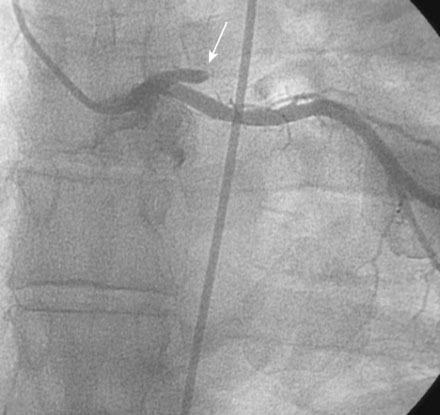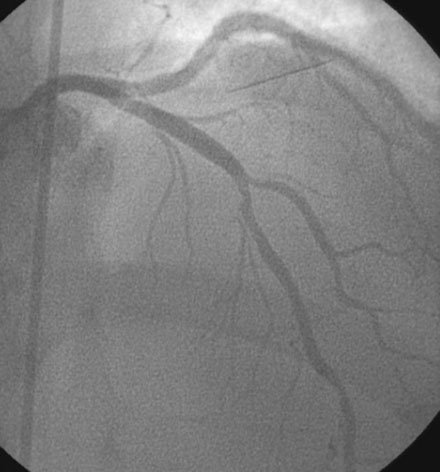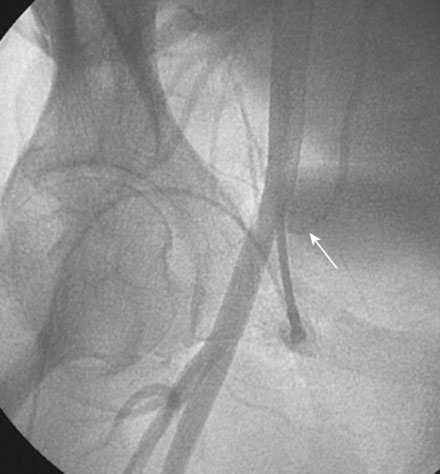CASE 25 Retroperitoneal Bleed
Cardiac catheterization
Angiography confirmed proximal occlusion of the left anterior descending artery (Figure 25-1). The operator successfully restored normal flow in this vessel with balloon angioplasty (2.5 mm diameter by 20 mm long balloon) followed by insertion of a 3.5 mm diameter by 15 mm long bare-metal stent (Figure 25-2). Adjunctive pharmacology included an additional bolus of unfractionated heparin and a bolus and infusion of eptifibatide. The left circumflex and right coronary arteries were angiographically normal. At the end of the procedure, 600 mg of clopidogrel was administered orally. The activated clotting time measured 260 seconds. An angiogram of the right femoral artery performed through the arterial sheath is shown in Figure 25-3 and Video 25-1. The operator successfully achieved access site hemostasis using a closure device (Starclose, Abbott Medical). The patient left the cardiac catheterization laboratory feeling well, with a blood pressure of 110/70 mmHg.
Postprocedural course
Upon arrival to the coronary care unit, he remained free of chest pain but became nauseated and reported right lower abdominal and scrotal pain. His heart rate fell to 51 beats per minute and his blood pressure dropped to 81/56 mmHg. He appeared pale and diaphoretic but denied chest pain. An electrocardiogram confirmed resolution of ST-segment elevation. Examination of the access site did not reveal any abnormalities; however, there was significant tenderness noted in the right lower quadrant, and scrotal swelling was observed. The operator again reviewed the femoral artery angiogram shown in Figure 25-3
Stay updated, free articles. Join our Telegram channel

Full access? Get Clinical Tree





